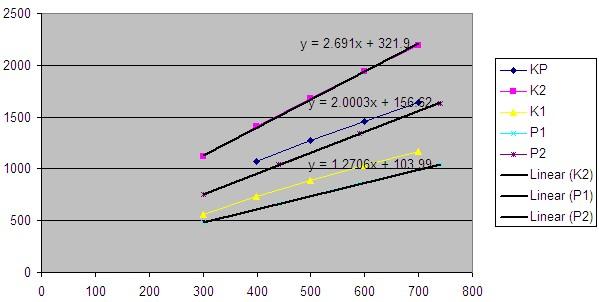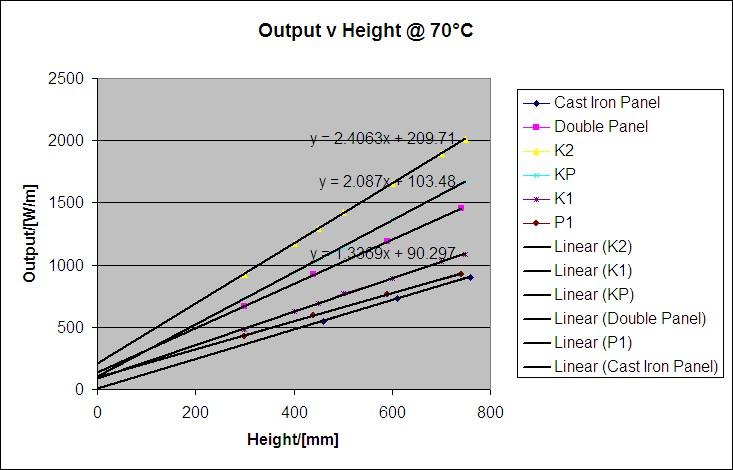I am trying to tot up the nominal output of my existing radiators. Some are old single or double panel radiators without any convector. I have looked at existing tables for output from single or double panel with one or two convectors and have come up with the following approximations to deal with odd sizes:
single panel, single convector: output = (1.52 x height + 0.120) x length
double panel, single convector: output = (1.9 x height + 0.314) x length
double panel, double convector: output = (2.69 x height + 0.320) x length
output in kW
length and height in m
Does anyone have tables for old single and double panel radiators (no convector)?
Edit: Using Zylo data for finless rads:
single panel: output = (1.27 x height + 0.104) x length
double panel: output = (2 x height + 0.157) x length
single panel, single convector: output = (1.52 x height + 0.120) x length
double panel, single convector: output = (1.9 x height + 0.314) x length
double panel, double convector: output = (2.69 x height + 0.320) x length
output in kW
length and height in m
Does anyone have tables for old single and double panel radiators (no convector)?
Edit: Using Zylo data for finless rads:
single panel: output = (1.27 x height + 0.104) x length
double panel: output = (2 x height + 0.157) x length



